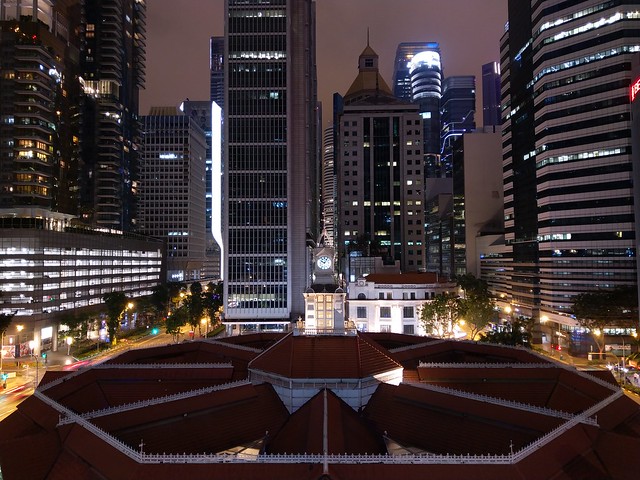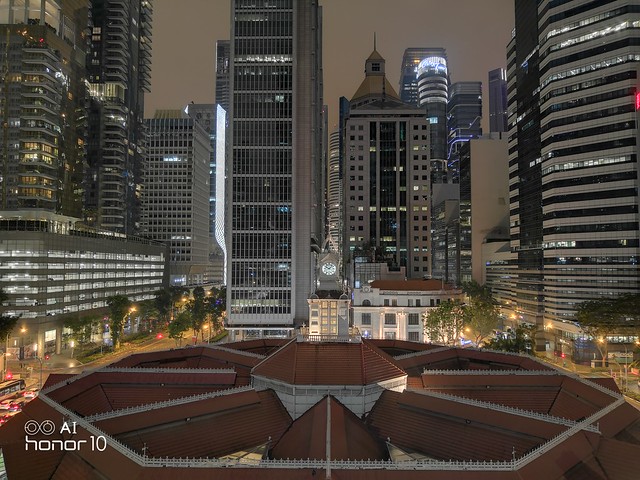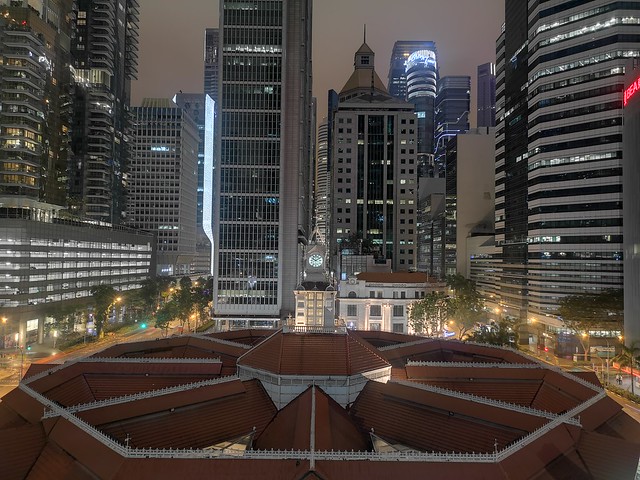The motivation behind writing this ranticle is fairly simple. The super premium high-end phones are getting ridiculously expensive. The iPhone X is going for S$1320, Samsung S9+ S$1020 (128GB) and Samsung Note 8 S$960 at my favourite online shops. They started off way more expensive than the going price now and they are not exactly the newest of phones to date. Do we really need to buy such expensive phones to ensure we can work properly while we are on the road?
One of the reasons why I am so interested in this was because it was not so long ago, I was in a way held ‘hostage’ by the telco contracts. For me to effectively work, only the top of the line phones does a decent job in running the Android OS. Fortunately, in the short span of 6-7, the processors that run the OS are also getting powerful and while being energy efficient even when the functions and features have increased and apps are more complicated as ever. The short answer is yes, the mid-range phones do not suck anymore.
I opined that the Android OS and apps work well even with the mid-range processors now. If you follow the news, Qualcomm has even introduced the 700 series Snapdragon processors that is as powerful as the 800 series processors you see in Samsung high-end phones. I would say the 600 series processors from the phones I just tested are as equally capable, at least for the next 2 years.
I do have other articles looking at this with a Q&A article and I will use the criteria I have shared about looking at new phones. Below is the table used in the Q&A article and I will highlight certain aspects so do keep this table handy. I will make quick work on the major areas for discussion.
| Brand Model | Processor | RAM | Storage | MicroSD | Earphone Jack | Display Res. | Display Type | Camera M/2/F | Water | Battery | Distinct Feature | Price | Range |
| Apple iPhone X | A11 | 3GB | 256GB | No | No | 5.8-inch Full HD | AMOLED | 12/12/7 | IP67 | 2716 | Face ID | 1888 | Crazy Premium |
| Samsung N8 | SD 835 | 6GB | 64GB | Yes | Yes | 6.3-inch QHD | AMOLED | 12/12/8 | IP68 | 3300 | Stylus | 1398 | Ultra Premium |
| Samsung S9 | SD 845 | 4GB | 64GB | Yes | Yes | 5.8-inch QHD | AMOLED | 12/12/7 | IP68 | 3000 | Slow Mo/AR Emoji | 1198 | Ultra Premium |
| Oppo R15 Pro | SD 660 | 6GB | 128GB | Yes | Yes | 6-inch Full HD | OLED | 16/20/20 | – | 3430 | 899 | High | |
| Honor 10 | Kirin 970 | 4GB | 128GB | No | Yes | 5.84-inch Full HD | LCD | 16/24/24 | – | 3400 | Face ID | 579 | Mid |
| Vivo X21 | SD 660 | 6GB | 128GB | Yes | Yes | 6.28-inch FHD | AMOLED | 12/5/12 | – | 3200 | In-Screen Fingerprint Scanner | 748 | High |
| Nokia 7+ | SD 660 | 4GB | 64GB | Yes | Yes | 6-inch FHD | LCD | 12/13/16 | – | 3800 | Android One/Ceramic Cover | 599 | Mid |
| ASUS Zenfone 5 | SD 636 | 4GB | 64GB | Yes | Yes | 6.2-inch FHD | LCD | 12/5/8 | – | 3300 | Ultra Wide Angle Camera | 488 | Budget |
| Xiaomi A1 | SD 625 | 4GB | 32GB | Yes | Yes | 5.5-inch FHD | LTPS LCD | 12/12/5 | – | 3080 | Android One | 300 | Budget |
Aesthetics
All the phones look okay actually and it is really a matter of preference on how it looks. How the phone FEELS is also subjective because the size of our hands are also different. What I can say is about my preference and you can take it from there. I put it the Nokia 7 Plus as my favourite because it doesn’t have that mirror finish, the ceramic cover is also classy too.
Processors
All the phones that decidedly mid-range except for 2 phones. Honor, thanks to the parent company Huawei, has the same Kirin 970 as the more illustrious Mate 10 and P20 smartphones. Asus Zenfone 5 uses a slightly less powerful 636 processor but is still good enough for most users.
RAM
Between having better processors or having more RAM, I would have more RAM any day. Then again, having 4GB of RAM will last you for the next 2 years pretty easily. To ensure the phone is not being overwhelmed by numerous app, install lesser apps and stop the apps from running in the background once you shut it down and all these can be done in settings. The battery will also thank you for it too.
Storage and MicroSD Card
When I look at storage, the first thing I look for is the MicroSD card slot. Storage expansion may not mean much in the era of 128GB or even 256GB but it is also quite useful when you already have ample onboard storage like pushing videos and photos unto the card so that if anything happens to the phone, the photos and videos are saved. Besides one of the main reasons why we love Android is because of the use of expandable storage capacity and the MicroSD card slot gives me a bit of convenience.
Battery Pretty straightforward. More the better.
3.5mm Earphone Port Another one pretty straightforward. I know some manufacturers show great ‘courage’ to let go of the audio port but seriously it is one of the most useful port, especially for a photographer because I can use my call button on my hands-free earpiece as a shutter release cable. Very very useful. Besides, there are times when my wireless headset battery is dead or there are disruptions when too many Bluetooth headset are around. This is important for me if I travel far distances and want my entertainment and I won’t be hampered by the battery issue. For high-end phones that do not have a 3.5mm stereo headphone jack is really not cool. Good thing all the mid-range phones still have the 3.5mm headphone jack.
USB Port
I would have thought this should really be in the dustbin of history especially for smartphones when it comes to MicroUSB ports. I did see wireless headphones and cameras are using MicroUSB port to charge but Smartphones? The reason is simple. End of the day, I just want to quickly plug my phone to charge. When I have to align my USB cable to the phone, it is just annoying. What’s the reason for wireless charging again? Yes, plugging into the cable and USB Type-C just makes it a bit easier and is faster than wireless charging.
AMOLED/LCD Screen
Practically speaking it is not much of difference in terms of day to day use. Yes, there are differences but it really doesn’t matter in the scheme of things so long the colour is more or less accurately shown to the user and bright enough to be read under the sun. I would say the reason I still put this as differentiating factor is the battery used and even that, I hardly see a huge difference too. Still, I give higher marks for AMOLED use.
User Interface
Again this is pretty subjective. For me, the native look and control are always welcomed. In this round up the surprise was Oppo R15 Pro’s gesture that replaces the ‘Back’, ‘Home’ and ‘Previous App’ soft buttons which is faster. However, the user interface also includes how I access the system menu and Android One is definitely clearer, cleaner and superior.
Besides Android One does provide a competitive advantage and it is a ‘feature’ I will place a higher weight when choosing a phone. Why? Read here.
The Camera
This is one area that one has to see to believe it and make own judgment. You can see the sample photos using this album link. I have shared the most telling comparison using this comparison photo at 100% zoom in and crop at 640 x 480 pixels. At this level it is at a ridiculous pixel peeping level already and really don’t make sense as I feel that looking at the whole picture is definitely how we appreciate photos.

Here I took three photos that I think are the best when I look at the bigger picture and that’s how we view photos anyway. Perceptively the Honor 10 and P20 Pro have more details generally thanks to a ‘cheat’ we called Night Scene Mode. With that in mind, the Nokia 7 Plus has done pretty well without such a mode. If I get to choose, for night shots I will take the Honor 10 but the Zeiss lens really does wonders too. Because of the ISO noise even when I used the lowest ISO settings for both the Oppo and Vivo phones, they are out of the contention. You can see the photos here.



A night shot is definitely the toughest for smartphone cameras due to the insensitivity of the small sensor being used hence I wouldn’t want to be too critical. There is definitely clear winners here already but do keep in mind, there are other things such as skin tones that one should look into as well that you can see in the album link.
My conclusion is that the Nokia 7 Plus has a wee bit more quality in the images, a tad sharper, a tad better colour in some shots. The Honor 10 is a very very close second and the Night Mode is useful but only when you have tripod being used with it. These two smartphones gave me quite a lot of joy to use for photography.
The Conclusion
I tabulate the various aspects and here is the result.
| Asus Zenfone 5 | Honor 10 | Nokia 7 Plus | Oppo R15 Pro | Vivo X21 | |
| Glass Back | Yes | Yes | No | Yes | Yes |
| Aesthetics | 1 | 4 | 5 | 3 | 2 |
| Processors | 3 | 5 | 4 | 4 | 4 |
| RAM | 4 | 4 | 4 | 5 | 5 |
| Storage | 4 | 5 | 4 | 5 | 5 |
| MicroSD | 5 | 4 | 5 | 5 | 5 |
| Battery | 2 | 3 | 5 | 4 | 1 |
| USB Port | 5 | 5 | 5 | 4 | 4 |
| Screen | 4 | 4 | 4 | 5 | 5 |
| User Interface | 2 | 3 | 5 | 4 | 1 |
| Camera | 1 | 4 | 5 | 3 | 2 |
| Price | 5 ($488) | 4 ($579) | 3 ($599) | 1 ($899) | 2 ($799) |
| Total Points | 36 | 45 | 49 | 43 | 36 |
Asus Zenfone 5 – The cheapest phone and doesn’t have the same performance as the rest because of the processor it doesn’t mean it is a bad phone. It even tie with Vivo X21. If having a good camera is not at the top of your list, then the Asus Zenfone 5 won’t be a bad purchase at all. Techgoondu Review
Honor 10 – The Honor is said to be the budget P20 but I won’t say it has the same feel. It has a good camera though and has the old Huawei Night Mode but require the use of a tripod. It doesn’t have that revolutionary handheld night mode that is talk of the town now for P20/P20 Pro. Overall, it is a good phone. Techgoondu Review
Nokia 7 Plus – Too many times people will use the brand and yet doesn’t deliver. When Microsoft relaunch the brand as Lumia, the phone did not get as much attention. Now it got my attention because it has Android and not just any Android OS but under the ONE banner. HMD also did great by balancing all the necessary features and package it nicely in a body that feels more expensive than its asking price. That alone helped me choose it over the Honor 10. The camera does well too and it is really down to experience of using the camera and it pips the Honor 10 in that aspect too. Techgoondu Review
Oppo R15 Pro – The most expensive phone of the lot and quite honestly I won’t consider it as mid-range if I am looking at the price. Why did I put it as mid-range then? The processor which is decidedly mid-range. It does have good amount of RAM, battery and storage space. But the price doesn’t commensurate with the look and feel of the phone. Its camera is not totally bad but it also doesn’t excite either and it is really selfie heavy. I still don’t understand it still use the MicroUSB port. It just feel incongruent and the value proposition just isn’t there. Techgoondu Review
Vivo X21 – Vivo, along with Oppo are sister companies with the internationally well known OnePlus brand all under BBK Electronics. And I put the X21 as mid-range because of the processor being used. Its main feature? The under-display fingerprint sensor and that’s it. The feel of the phone is not exactly exciting either. It is good but so does its competitors. Like the Oppo, the value proposition is not there even though it is $100 cheaper.
On the whole Oppo and Vivo are phones that can work well but the asking price is just too much. Let me give a bit of perspective. The P20, a flagship phone, now can be bought for $730 and somehow Vivo and Oppo still feel their phones are competitive and the dead give away is the use of the MicroUSB port. If the phones want to be seen as forward-looking, USB Type C is the future. Techgoondu Review

About Wilson Wong
Founder of the 10000+ Singapore Photography Interest Network photography group, avid gadget lover and budget wanderluster. His wish is to help people get the right stuff and enjoy life without cutting off limbs to do so.

Interesting. I am really after a phone with decent specs and a capable camera and I’ve had my eyes on the Zenfone 5 (especially now that it’s price has dropped here in the Philippines) but your review made me rethink a bit. Nokia 7 Plus is still much more expensive here though (Zenfone 5 is 334$ while Nokia 7 Plus is 427$). I think, with the price difference, I will still go for the Zenfone 5.
LikeLike
Hi Paul thanks for reading. Yes make decisions based on the local market price.
If you are an able phone shooter I would certain push you to save a bit more and go for the Nokia. Besides, the Android One is the OS I would choose to have.
If budget is really a constraint, then the ZF5 won’t be that bad either.
LikeLike
I’ve been waiting for a price-drop. Hopefully, Nokia 7 Plus drops soon but who knows. If it did, then it will definitely be on the table.
One of the things I consider is the on-the-go shots though. Nokia 7+ has no OIS while Z5 has it. I could be wrong but most of the pictures here used a tripod thus eliminating the need for OIS (I could be talking nonsense since I’m no photographer). That being said, may I know what your experience is in using Z5 and N7+ phones without the use of a tripod?
LikeLike
For good shots especially at night the tripod is a must. These two camera are not P20 Pro
LikeLiked by 1 person